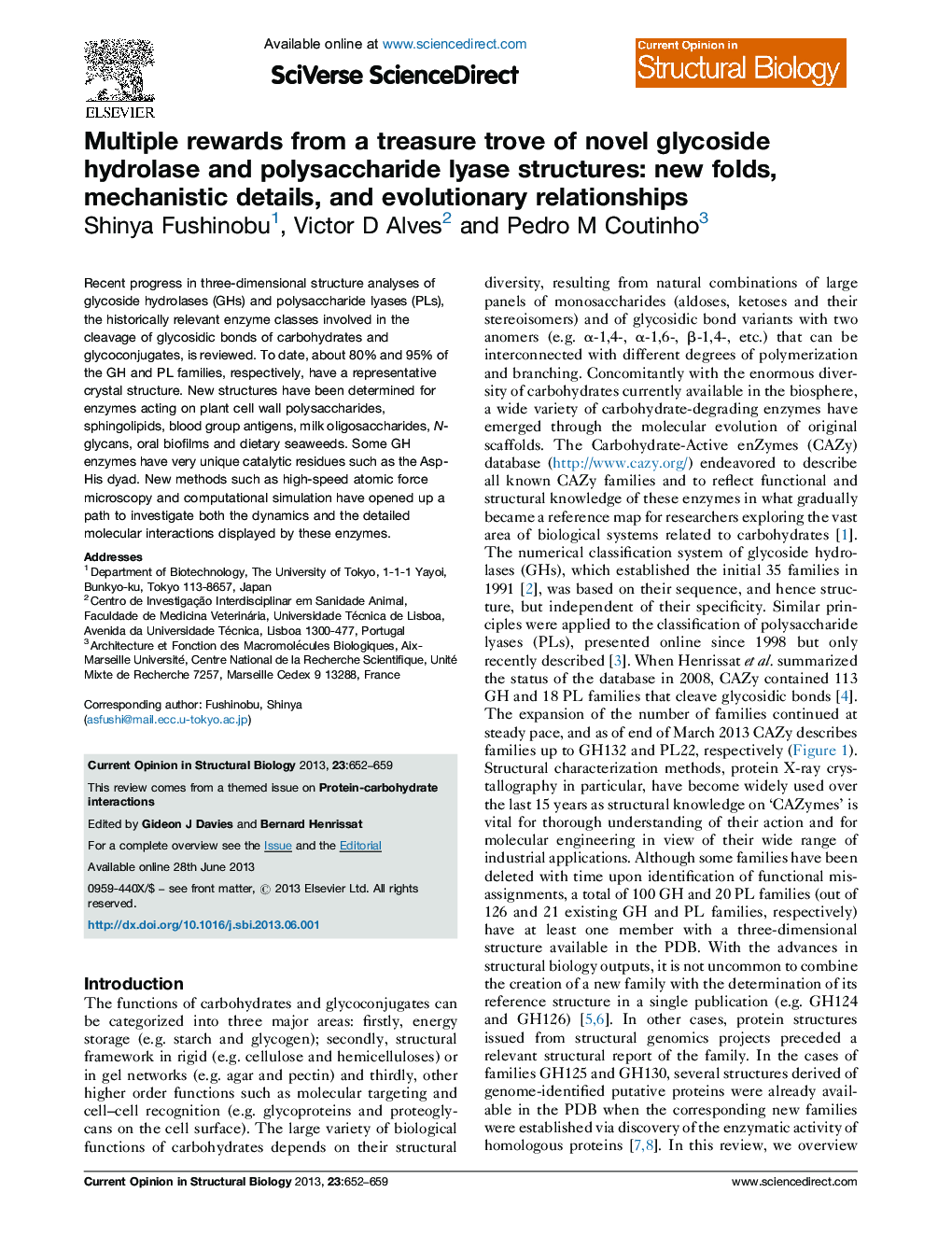| Article ID | Journal | Published Year | Pages | File Type |
|---|---|---|---|---|
| 10822590 | Current Opinion in Structural Biology | 2013 | 8 Pages |
Abstract
Recent progress in three-dimensional structure analyses of glycoside hydrolases (GHs) and polysaccharide lyases (PLs), the historically relevant enzyme classes involved in the cleavage of glycosidic bonds of carbohydrates and glycoconjugates, is reviewed. To date, about 80% and 95% of the GH and PL families, respectively, have a representative crystal structure. New structures have been determined for enzymes acting on plant cell wall polysaccharides, sphingolipids, blood group antigens, milk oligosaccharides, N-glycans, oral biofilms and dietary seaweeds. Some GH enzymes have very unique catalytic residues such as the Asp-His dyad. New methods such as high-speed atomic force microscopy and computational simulation have opened up a path to investigate both the dynamics and the detailed molecular interactions displayed by these enzymes.
Related Topics
Life Sciences
Biochemistry, Genetics and Molecular Biology
Biochemistry
Authors
Shinya Fushinobu, Victor D Alves, Pedro M Coutinho,
